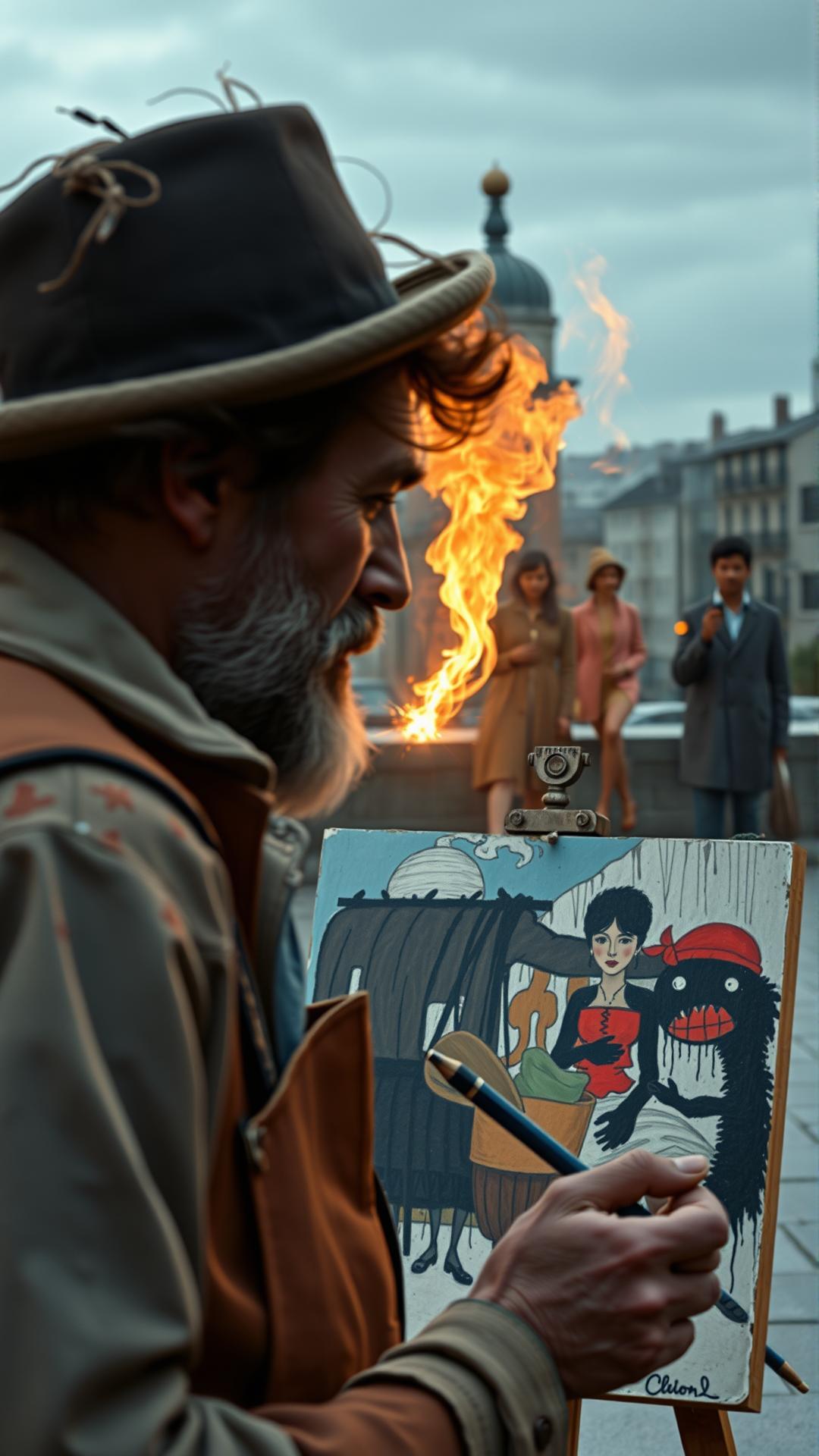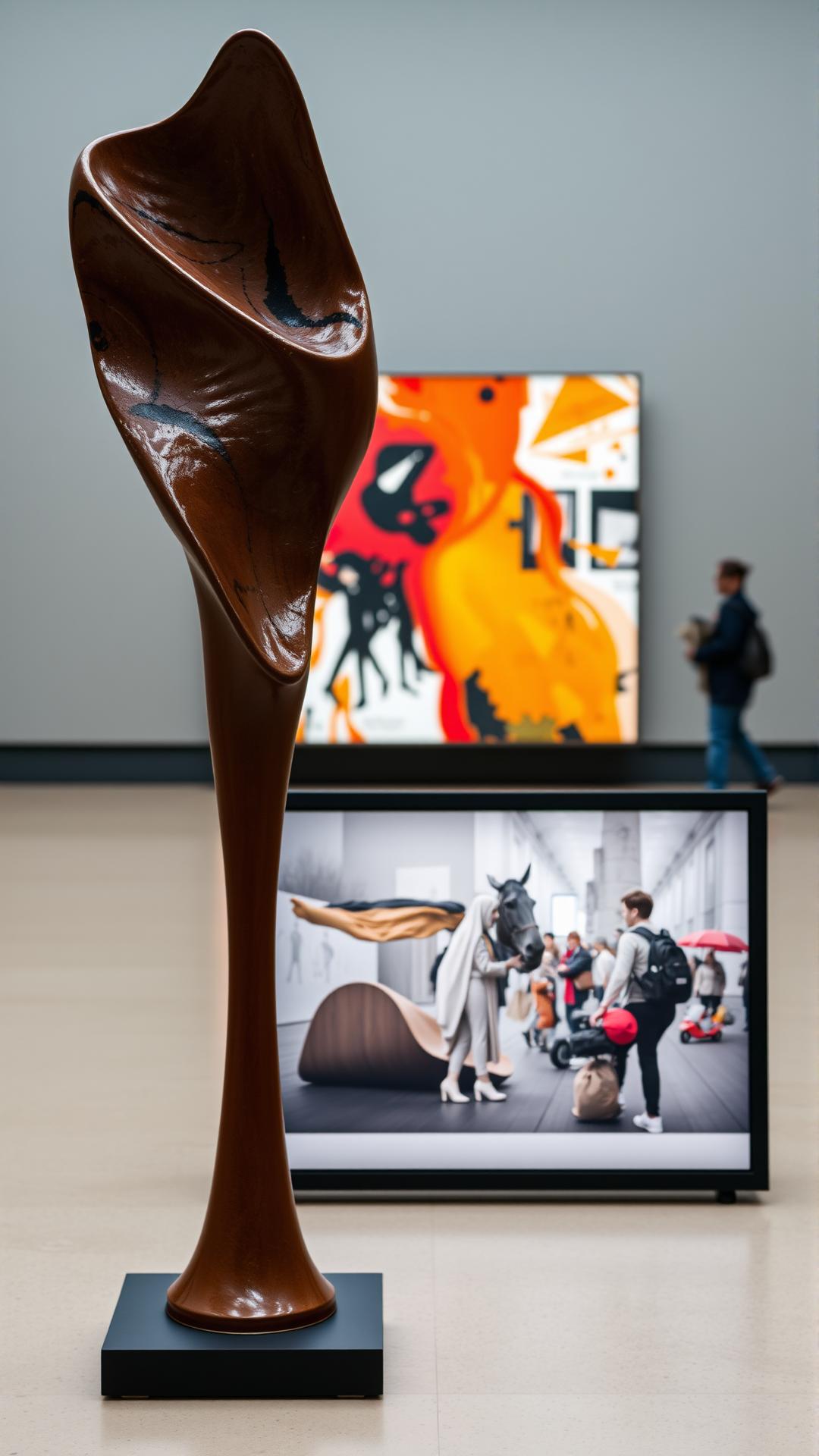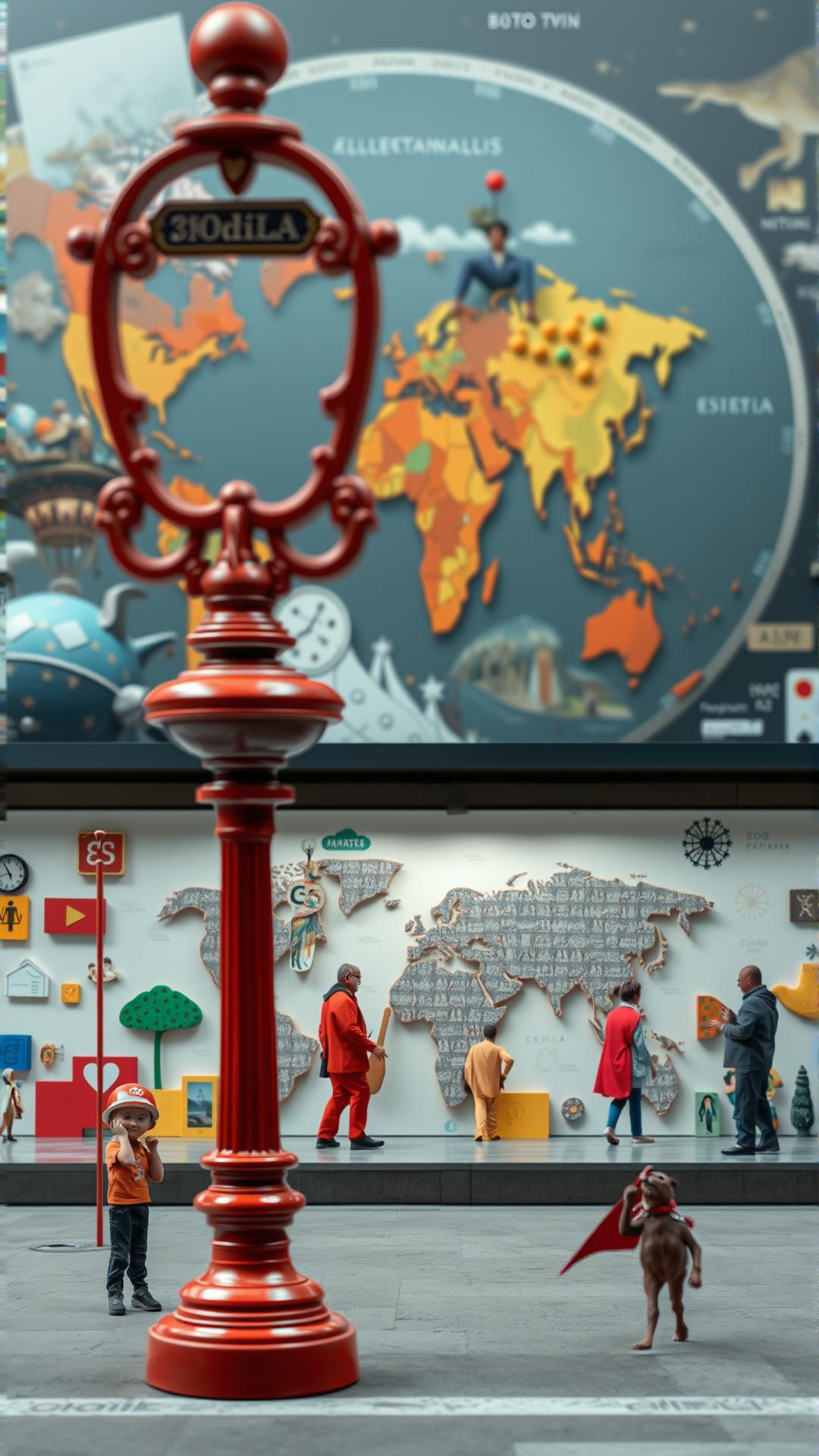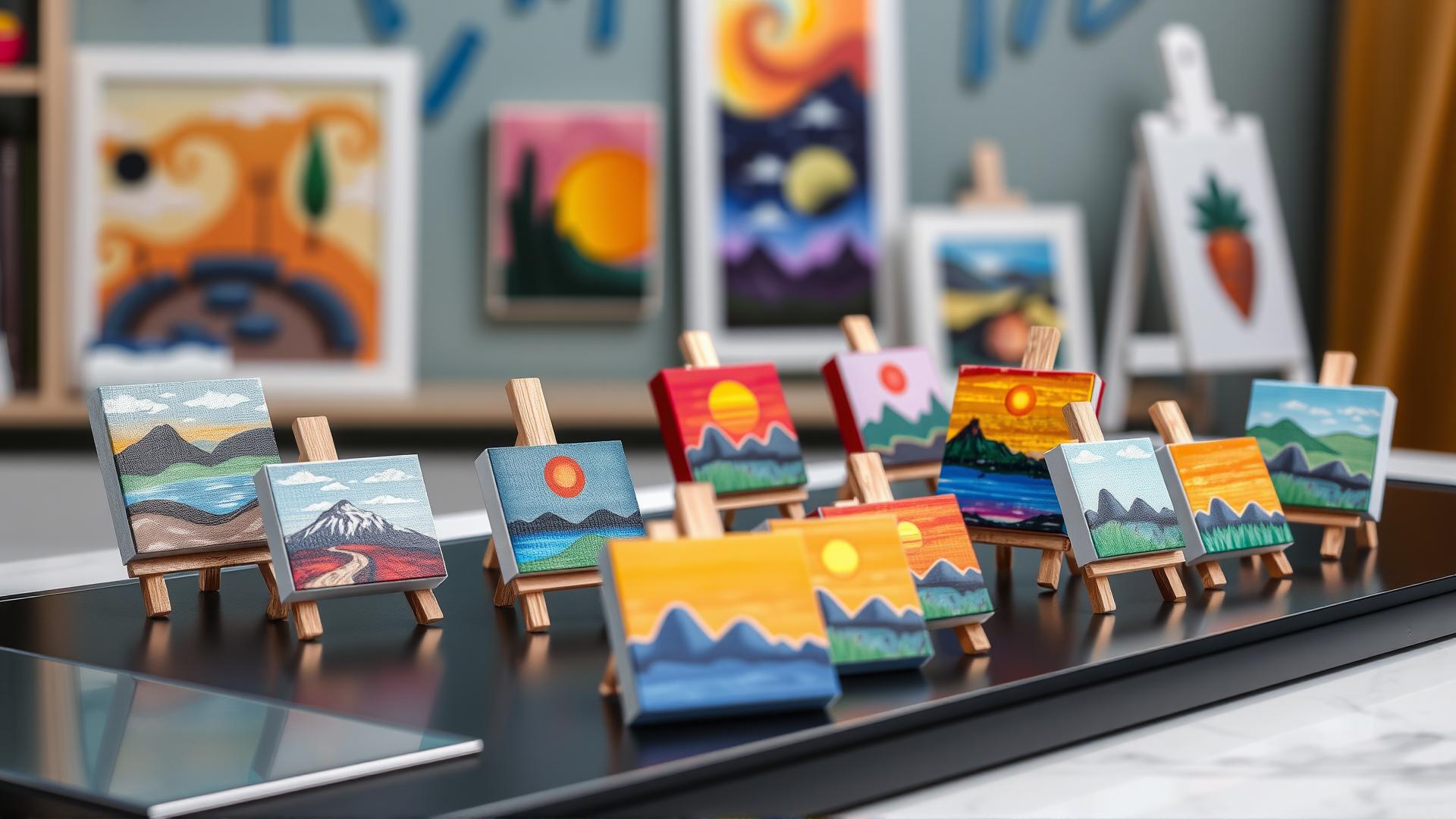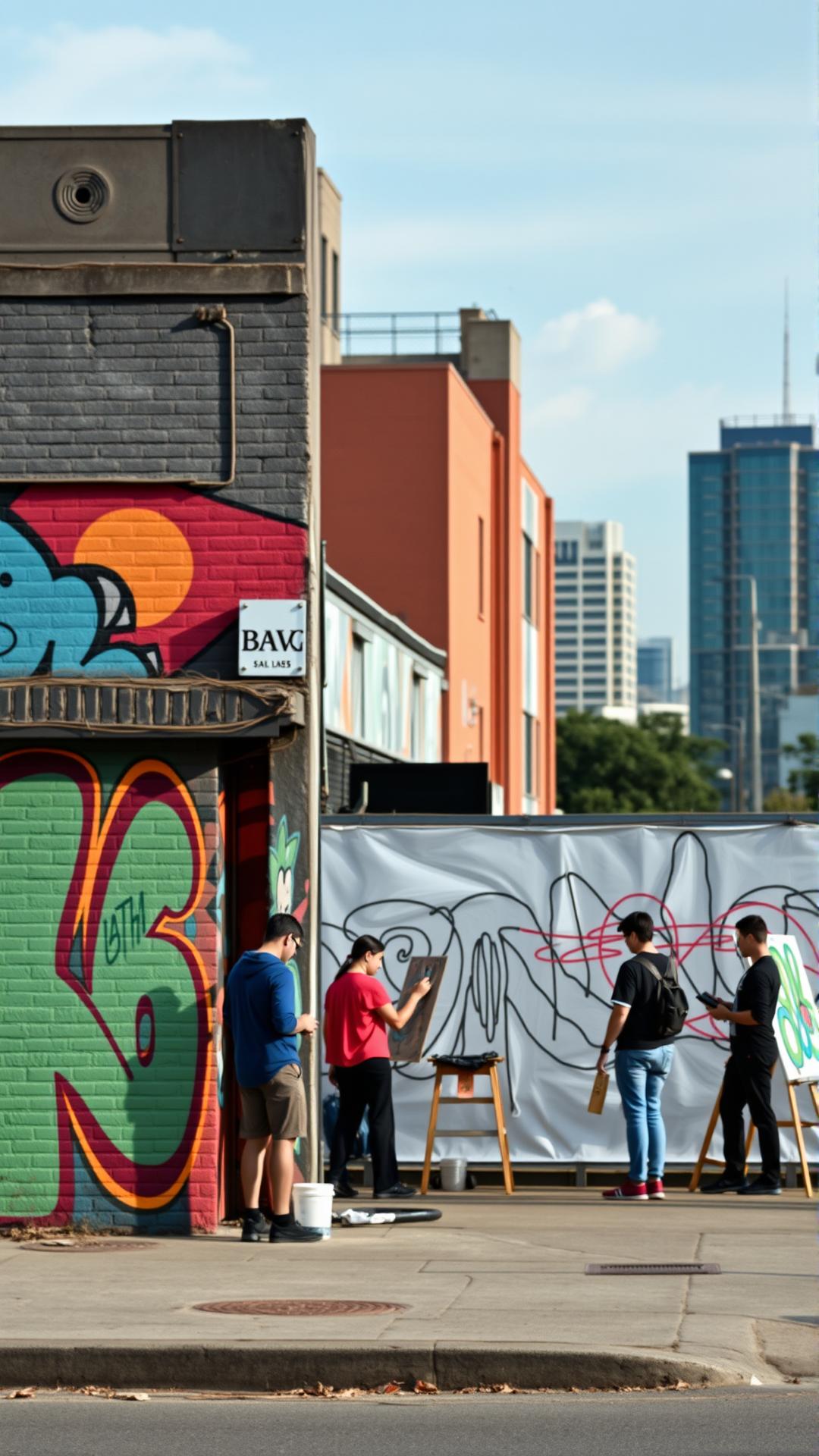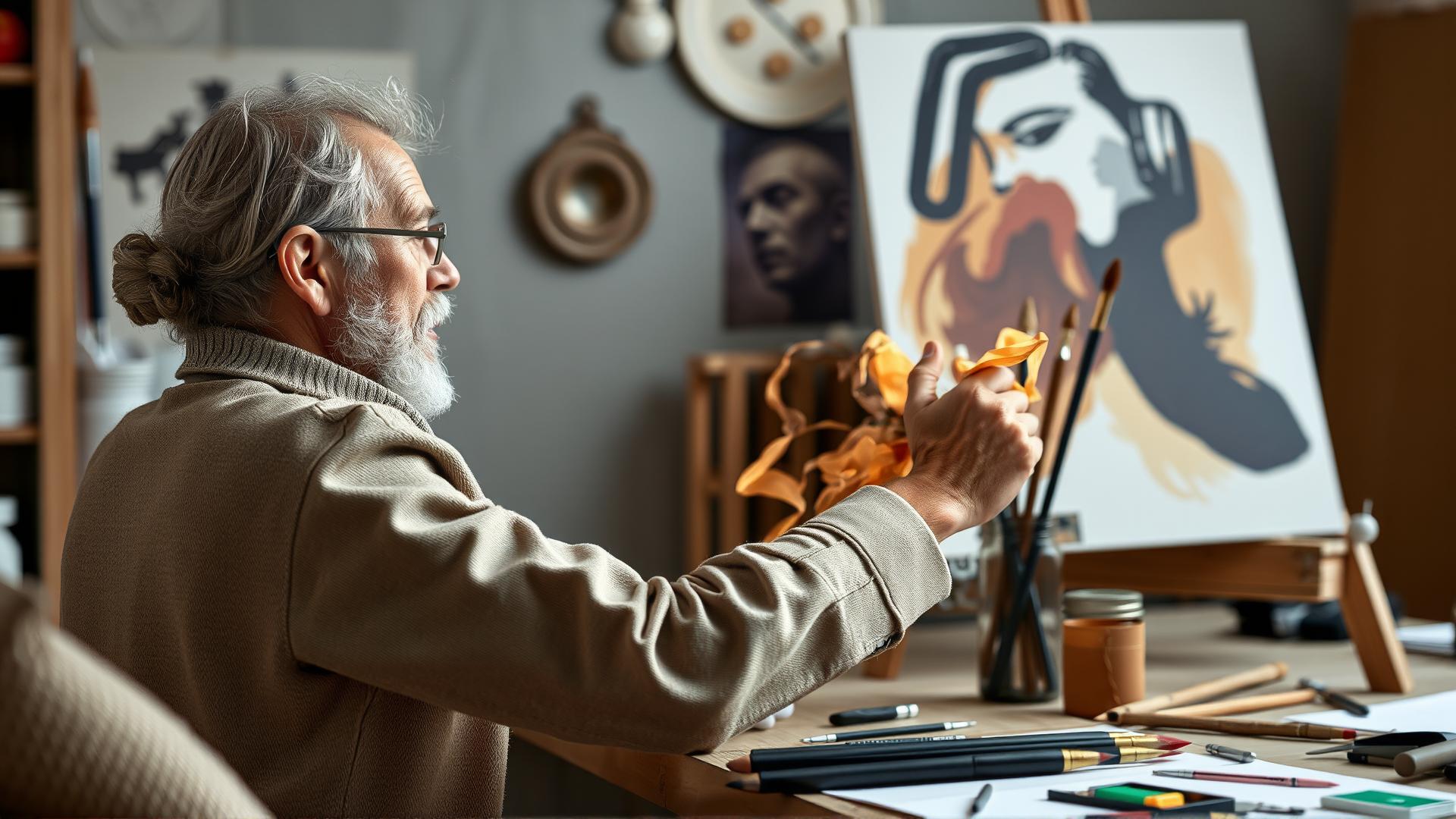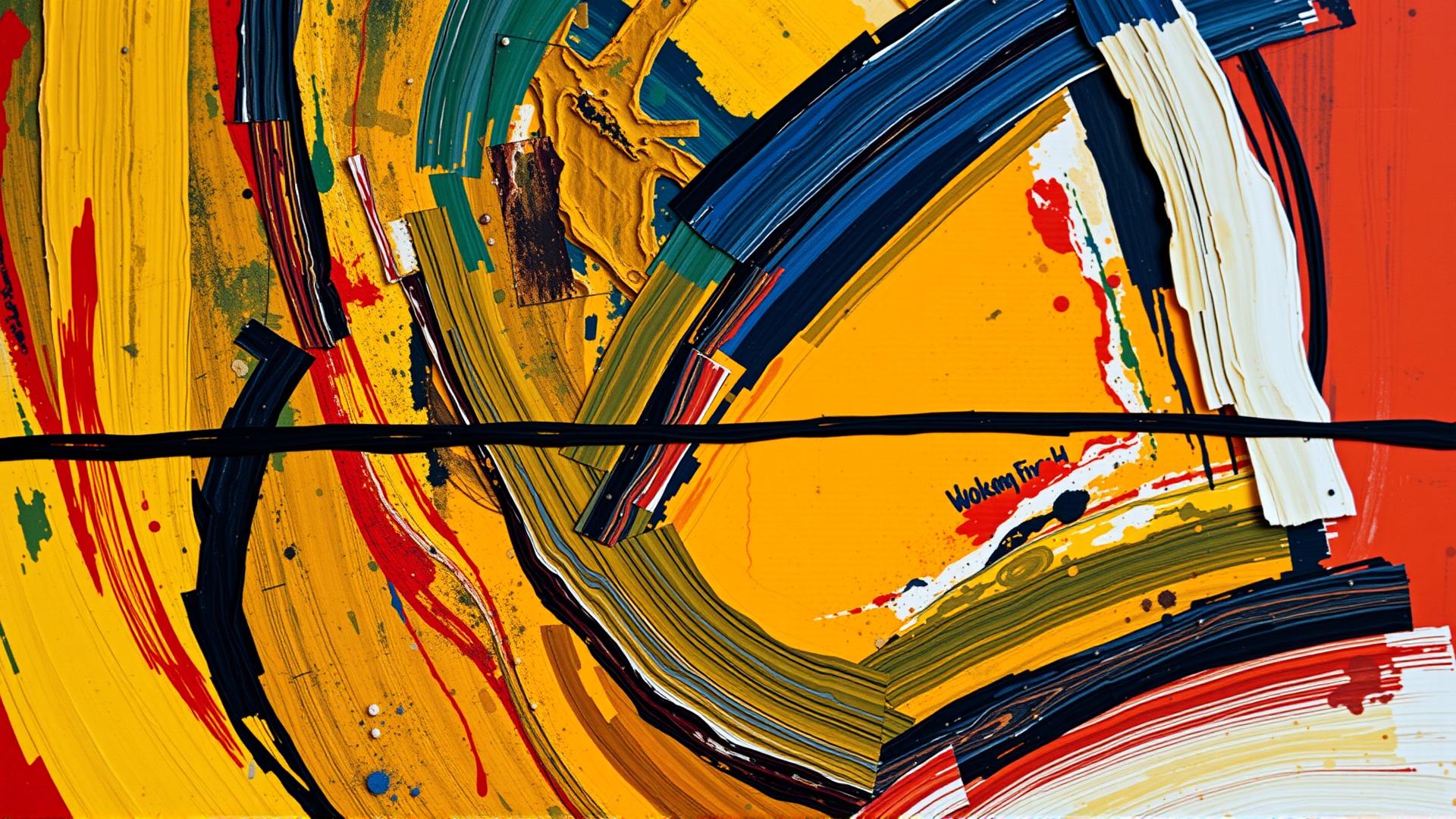
Unleashing Bold Creativity Through Expressionist Art Forms
Introduction
Expressionist art represents a vibrant yet complex movement that emerged in the early 20th century, primarily in Northern Europe, characterized by its intense focus on portraying emotions rather than real-world appearances. Artistically inclined individuals sought to shake off the constraints of naturalism and traditional representation, opting instead for vivid color choices, dynamic forms, and exaggerated features that capture and convey the inner workings of human emotions. Artists like Edvard Munch and Wassily Kandinsky broke new ground, creating works that invite viewers to engage with the emotional intensity of the subjects depicted rather than simply observing their physical realities.
This article explores the essence of expressionism across various art forms, delving into its historical context, significant artists, and its impact on subsequent artistic movements. From painting and literature to theater and music, expressionism has left an indelible mark on how creativity is perceived and produced, offering a powerful means of communication that resonates deeply with human experiences. As we unleash the bold creativity behind expressionist forms, we will observe how this movement continues to inspire and provoke thought in contemporary artistic expressions.
The Origins of Expressionism
A Historical Overview
The roots of expressionism can be traced back to the late 19th and early 20th centuries, a time marked by rapid industrialization and profound societal changes. This movement emerged as a powerful artistic response to the evolving landscape marked by Impressionism and Naturalism, both of which sought to depict reality with fidelity. Expressionism, however, took a different path, prioritizing the internal emotional experience over external appearances.
Expressionism emerged in reaction to the perceived limitations of Impressionism, which focused on the fleeting effects of light and atmosphere, and Naturalism, which aimed for accurate representations of the natural world. Instead of striving for realism, expressionists aimed to capture the psychological and spiritual aspects of the human condition. This artistic rebellion paved the way for artists to explore their innermost feelings, using art as a means to express their anxieties, passions, and fears.
Key Characteristics and Influential Artists
One of the hallmark features of expressionist art is its bold use of color, often reflecting the artist’s emotional state rather than the subject matter itself. Vibrant, sometimes dissonant colors convey a spectrum of emotions, ensuring that the artwork resonates on a deeper level. The brushwork tends to be vigorous, emphasizing movement and dynamism—qualities that often create a sense of urgency and emotional intensity.
Influential artists played a pivotal role in shaping the movement. Edvard Munch, known for “The Scream,” exemplified the emotional turmoil that characterized the period. His depictions of the existential crisis are deeply resonant and have left an indelible mark on the art world. Other key figures include Wassily Kandinsky, who explored abstraction with a focus on spiritual and psychological dimensions, and Egon Schiele, renowned for his raw and often provocative portrayal of the human form.
Expressionism significantly impacted various art forms beyond painting, influencing literature, theatre, and music. Artists and writers alike engaged with the freedom of expression that the movement championed, allowing them to reach beyond conventional boundaries. This enriched the cultural tapestry of the time and laid the groundwork for future avant-garde movements. The legacy of expressionism endures, reminding artists to harness their emotional experiences and convey them boldly through their chosen mediums.
The Artistic Elements of Expressionism
Color Usage and Emotion
Expressionist art is characterized by its bold color palettes, which convey emotions far beyond the reality they depict. Artists like Edvard Munch and Wassily Kandinsky utilized color not merely as a descriptive tool but as a method of emotional articulation. The choice of colors often reflects heightened feelings, transforming the artwork into a visceral experience. For instance, Munch’s “The Scream” employs stark contrasts to evoke feelings of anxiety and existential dread. Vivid reds and intense blues are strategically placed to influence the viewer’s emotional state, engaging them in a dialogue that transcends mere observation. In essence, color becomes a language of its own, articulating the unexpressed and the ineffable.
The Dynamics of Emotional Expression
Another pivotal element of expressionist art is line, which serves as an expressive vehicle for the artist’s state of mind. The use of sweeping, twisted, or jagged lines can convey tension, agitation, or even chaos. These dynamic forms manipulate the visual space, leading the viewer’s eye and emotional response. For example, in works by Franz Marc, the overlapping curves and angular forms create a sense of movement that parallels emotional experiences, often reflecting themes of nature intertwined with human emotion. Lines do not simply guide the viewing experience; they embody the emotional intensity of the subject being depicted.
Configuring Emotional Landscapes
Composition in expressionist art is marked by its unconventional frameworks, which often defy traditional perspectives. The organization of subject matter can evoke a myriad of emotional reactions, as the arrangement of elements within the artwork tells its own story. In pieces by artists like Ernst Ludwig Kirchner, figures may appear distorted or disproportionate, yet this intentional disarrangement captures the chaotic nature of modern life and inner turmoil. Through asymmetrical compositions, the viewer is invited to engage with the artwork’s emotional landscape, often feeling an immense connection to the depicted turmoil.
Expressionism masterfully employs distinctive elements such as color, line, and composition to convey deep emotional experiences and amplify subjective realities. These aspects come together to form a bold artistic language that resonates profoundly with both the artists and their audiences, pushing the boundaries of creativity and emotional expression.
Expressionism Beyond Painting
Expressionism in Literature, Theater, and Music
While painting remains the hallmark of expressionism, the movement’s reach extended far beyond the canvas, profoundly influencing literature, theater, and music. These art forms embraced the core principles of expressionism, primarily emphasizing emotional experience and subjective perspectives. Through unique narrative techniques, character development, and rhythmic compositions, creators were able to manifest the depth of human feeling—a hallmark of the expressionist ethos.
In literature, writers such as Franz Kafka and Virginia Woolf explored the tumultuous inner workings of the human mind. Kafka’s surreal narratives bespoke alienation and absurdity, while Woolf’s stream-of-consciousness approach captured the fluidity of thought and emotion. Characters became vessels of complex psychological states rather than mere plot devices, reflecting the unpredictability and intensity of emotional experiences. These authors forged new pathways for narrative that emphasized introspection, eschewing traditional story structures for a more fragmented and emotive storytelling style.
Theater, too, was transformed by expressionist ideals. In the early 20th century, playwrights like Bertolt Brecht and Edward Gordon Craig pushed the boundaries of performance, prioritizing the expression of emotional truths over realistic portrayal. Brecht’s alienation effect was designed to disengage the audience from the comfort of passive viewing, compelling them instead to critically interact with each performance. The use of stark staging, exaggerated gestures, and dissonant dialogue illuminated the rawness of human despair and struggle, driving audiences to confront societal issues rather than merely being entertained.
In music, expressionism found its voice in the works of composers such as Arnold Schoenberg and Alban Berg. They broke free from traditional harmonic structures, employing atonality and unconventional scales to evoke genuine emotional upheaval. The dissonance present in their compositions served as sonic representation of internal chaos, mirroring the struggles presented in visual art and literature. This new musical language, much like its counterparts in other disciplines, encouraged listeners to experience music not just as auditory pleasure but as an emotional journey through the human psyche.
The cross-pollination of these disciplines exemplifies the profound impact of expressionism in broadening the horizons of artistic exploration. By delving into the depths of emotional experience, expressionism forged a legacy that permeated various art forms, challenging and redefining the very essence of how we engage with creativity.
Expressionisms Global Influence
The Global Reach of Expressionism
Expressionism originated in early 20th-century Europe, characterized by its intent to communicate emotional truths rather than representational accuracy. The movement’s bold experimentation with form, color, and subject matter planted seeds that would grow into a diverse array of global artistic movements. From Latin America to Asia and Africa, expressionism rapidly influenced artists who sought to articulate their own emotional experiences through subjective lenses.
In the United States, for instance, the New York School of Abstract Expressionism emerged as a reaction to the expressiveness found in European art. Artists like Jackson Pollock and Mark Rothko drew inspiration from the emotional fervor of expressionism, translating its principles into their use of color and form. They abandoned traditional techniques in favor of spontaneous creation, thus allowing their emotions to dictate their art. This shift marked a definitive moment in art history where personal narrative took center stage, an echo of the expressionist ethos.
Artists such as Rufino Tamayo and Diego Rivera infused expressionist strategies into their works, underscoring cultural identity and socio-political themes. Their art often reflected indigenous heritage and the struggle against colonialism, channeling the emotional impact of their experiences into vibrant colors and compelling forms. This blending of expressionism with local contexts illuminated not only personal narratives but also broader societal issues, creating a powerful visual dialogue that resonated with audiences worldwide.
Contemporary Practices and Expressionism
As time progressed, expressionism’s essence found its way into various contemporary practices. Movements such as Neo-Expressionism in the 1980s brought the emotional drive of expressionism back to the forefront. Artists like Jean-Michel Basquiat and Anselm Kiefer embraced themes of myth, history, and identity, channeling the raw energy characteristic of early 20th-century expressionism. Their works often confront complex societal issues, bridging the gap between past and present artistic expression.
The legacy of expressionism persists in today’s multidisciplinary art forms, where collaborations between visual art, performance, and multimedia enable a more visceral exploration of emotional landscapes. Contemporary creators harness diverse mediums—video art, installation, and even digital expressions—to reflect their subjective realities, echoing the foundational spirit of expressionism. This continual adaptation underscores the movement’s lasting influence, proving that the quest for emotional truth remains an essential driver of artistic innovation worldwide.
Reviving Expressionism in Contemporary Art
Contemporary Reflections of Emotional Depth
Expressionism, once a vibrant movement of the early 20th century, has recently experienced a compelling resurgence in contemporary art. This revival is marked by artists who are confronting emotional truths and subjective realities through techniques reminiscent of the original expressionists. Contemporary practitioners harness the bold colors, distorted forms, and innovative compositions that defined the early expressionist works, translating them into modern contexts that address today’s complex emotional landscape.
One significant aspect of this contemporary revival lies in the way artists engage with themes of identity, trauma, and the human condition. For instance, the works of artists like Julie Mehretu and Kerry James Marshall demonstrate how expressionist methods are employed to articulate personal and collective narratives. Mehretu’s layered compositions, resembling chaotic maps of experiences, evoke a sense of emotional upheaval reflective of expressionism’s desire to convey raw human experience. Similarly, Marshall’s use of vibrant colors and emotive figures captures the struggles and triumphs of African American identity, blending personal resonance with socio-political commentary.
The techniques utilized in contemporary expressionism are equally significant. Today’s artists are experimenting with mixed media, incorporating technology and incorporating elements like video and installation art. For example, artists such as Pipilotti Rist use video projections to create immersive environments that encourage viewers to engage on an emotional level. These new mediums expand the expressive possibilities while remaining deeply rooted in the tradition of emotional authenticity that characterized the original movement.
Blending Tradition with Modernity
This revival also reflects a broader cultural acknowledgment of mental health and emotional expression, paralleling the original expressionist ethos of highlighting the often-overlooked aspects of emotional experience. Artistic platforms, such as social media, allow contemporary artists to disseminate their works widely, connecting fragmented audiences and fostering a dialogue around the themes of vulnerability and the human experience. Artists are not only revisiting traditional expressionist styles but are also modifying them to fit today’s urgent conversations about social issues, personal struggles, and the interplay between individual experiences and shared human realities.
Through the lens of expressionism, contemporary artists harness creative courage to confront their inner worlds and societal themes. This unyielding spirit paves the way for an exciting future, affirming that the heart of expressionism remains a defining force in art’s quest for emotional depth and subjective exploration.
Conclusions
Expressionist art serves as a profound testament to the ability of artists to articulate complex emotional landscapes through their work. Whether in the emotionally charged brushstrokes of a painting, the vibrant imagery of a theatrical performance, or the evocative language of literature, expressionism boldly expresses the depth of human feeling. This artistic movement not only allows for countless interpretations but also invites audiences to reflect on their emotional responses, bridging connections across time and space.
As we celebrate the creativity that emanates from expressionist art forms, it is vital to remember their significance in challenging traditional norms and expanding the boundaries of artistic expression. The bold exploration of subjective reality that defines this movement continues to influence artists worldwide, encouraging them to embrace their emotions fully and share their unique perspectives with the world.


